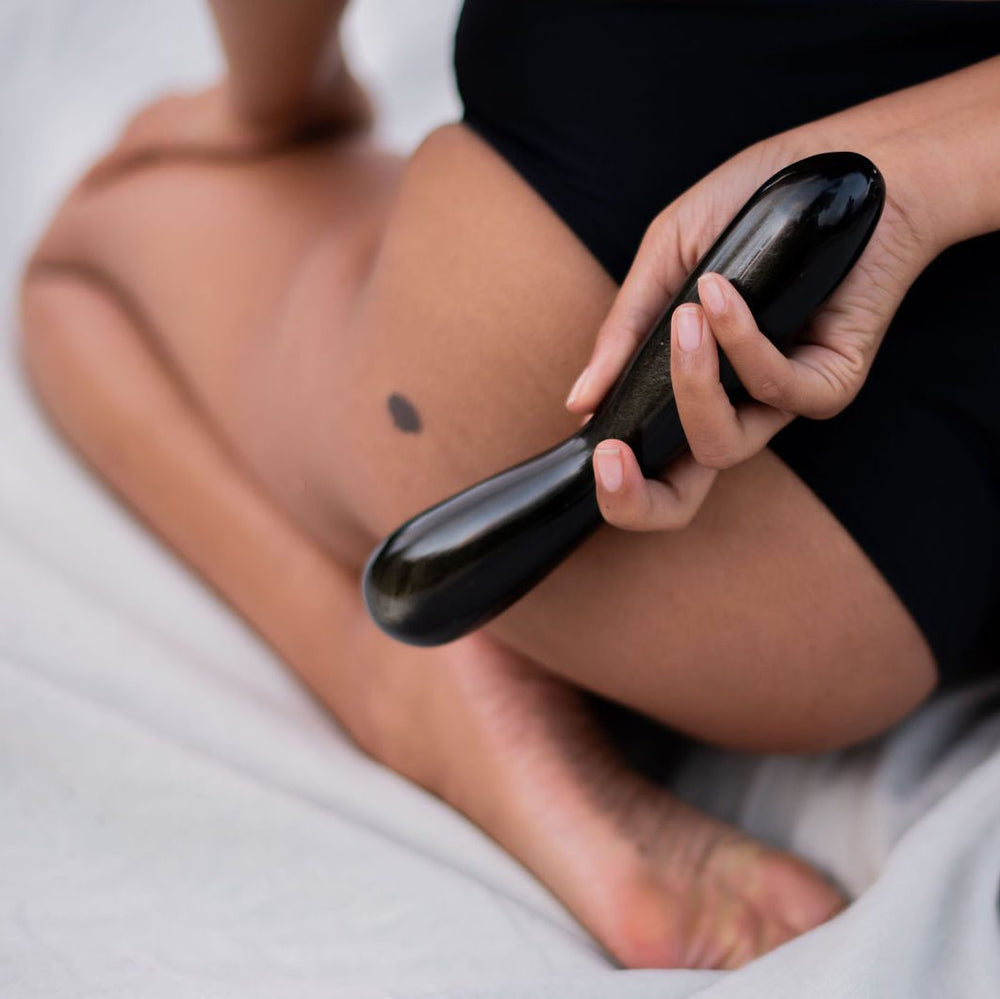Sex Addiction Symptoms: Signs, Treatments, and How to Break Free
Table of Contents
Sex addiction is a pattern of compulsive sexual acts and behavior that feels difficult, or sometimes impossible, to stop, even when it's hurting you or others. It often starts with using sex as a way to cope. Maybe it’s porn. Maybe it’s hookups. Maybe it’s constant sexting or obsessing over fantasies. Whatever the form, it offers temporary relief, but that relief is always followed by guilt, shame, and the need to do it again.
Over time, the cycle gets tighter. You start losing track of your boundaries. It becomes harder to focus, harder to connect, harder to feel real satisfaction. Relationships suffer and self-respect erodes. You keep telling yourself you’ll stop, but you don’t. Not because you don’t want to, but because the underlying reasons haven’t been addressed.
This article goes deeper than surface-level solutions. We’re unpacking what sex addiction actually looks like, how it forms, and how to start building strategies that help you break the cycle, for good.
What is Compulsive Sexual Behavior?
It doesn’t start with handcuffs, porn tabs, or a string of hookups. It starts quietly, similar to patterns of substance abuse . In isolation, in that moment you don’t want to feel something, so you reach for distraction, stimulation, relief.
Sex addiction is a compulsive cycle. Sexual addiction becomes the only way you know how to soothe, escape, or feel something. But the momentary rush of dopamine becomes a stand-in for intimacy, for clarity, for care.
Healthy sexual desire is expansive, connected, and chosen. On the other hand, addiction doesn’t feel like a choice. It hijacks your thoughts, your time, and your body. You start rearranging your life around it, canceling plans, skipping sleep, lying to your partner, disappearing into screens or strangers, only to come back to the same place of shame, confusion, and the thought, why do I keep doing this?
For some, it looks like daily porn use. For others, it’s high-risk sex, compulsive masturbation, or serial affairs. But the common thread is compulsion. You try to stop, you tell yourself it’s the last time. But it keeps pulling you in. Not out of lust, but out of habit, pain, or emptiness you haven’t learned to meet another way.
Signs of Sex Addiction and Symptoms: The Invisible Chains
1. You’re thinking obsessive sexual thoughts constantly, often when you don’t want to.
You’re mid-conversation and your mind drifts to porn. You’re in traffic and replaying fantasies. You’re lying next to your partner and imagining someone else. It’s not even pleasurable anymore. It’s intrusive, and exhausting.
These signs can indicate a possible sex addiction, where the overwhelming loss of control over sexual thoughts and urges becomes evident.
2. You keep chasing stimulation to avoid emotion.
Sad? Masturbate. Bored? Open a sex app. Anxious? Watch porn until you forget what you were worried about.
3. You feel out of control.
You tell yourself “this is the last time.” You mean it. And then you’re back in it a few hours later. The ritual starts before you even realize what’s happening. The urge hits, and your body follows. You watch it happen like you’re not even in the room.
4. Porn use has escalated, both in time and intensity.
What once felt exciting doesn’t do it anymore. You find yourself needing more graphic, more extreme, more intense content just to feel anything. You try to stop, but you can’t.
5. You feel numb during sex or self-pleasure.
You go through the motions. You might climax, but you barely feel anything. There’s no intimacy, no connection.
6. You lie or hide your behavior.
You delete search histories. You downplay what you’re doing. You make up excuses. You say “I was just tired” when what you really mean is “I was up until 2am getting myself off.”
7. You feel shame or self-loathing afterward.
The dopamine wears off and what’s left is hollow. Regret, guilt, sometimes disgust. You start to believe something is wrong with you. That this is who you are.
8. It’s interfering with your actual life.
Deadlines are missed. You’re late to things. Your sex life with your partner is tanking, or faked. You feel checked out around people you love. You start avoiding connection that feels real, because it can’t compete with the quick hit.
9. You’ve tried to stop and can’t.
You’ve blocked sites, deleted apps, even gone cold turkey. But the itch always comes back.
10. You don’t even want it anymore. You just need it.
This is when you know. You’re no longer in it for pleasure. You’re in it because something in you doesn’t know how to sit still, to feel, and to be.
The Types of Sex Addicts
The Validation Addict
This type uses sex as a tool to seek approval and external validation and affirmation, often as a response to past sexual abuse . The core drive isn’t pleasure, it’s to feel desired, seen, or chosen. Without sexual attention, they may feel unworthy, anxious, or invisible.
This pattern often develops in people who didn’t receive consistent emotional validation earlier in life. They’ve learned that being sexually appealing is the fastest route to attention, and they depend on that attention to regulate their self-worth. This leads to compulsive flirting, frequent hook-ups, or fixating on who is, or isn’t, responding. This behavior can negatively impact personal relationships, leading to isolation and strained connections with family, friends, and partners.
The Trauma-Driven Addict
For this person, sex has become a strategy to manage or suppress unresolved trauma. Often rooted in early experiences of abuse, neglect, or violation, this pattern uses sex to either numb out, feel powerful, or override a chronic sense of disconnection from the body. Unresolved trauma and mood disorders, such as depression or bipolar disorder, along with other mental health conditions can also contribute to sex addiction, creating a complex interplay of mental health issues.
They may engage in high-risk sex, dissociate during intimacy, or repeatedly seek out situations that mirror the original trauma. On the surface, it may look like hypersexuality or recklessness, but underneath is a deep emotional wound that’s never been processed.
The Emotional Escape Addict
This type uses sex as a escape and coping mechanism to manage emotional discomfort. The trigger is usually stress, anxiety, boredom, or loneliness. The urge to act out intensifies in moments of overwhelm, not because of desire, but because sex offers a fast, familiar escape.
The behavior becomes automatic: the moment discomfort rises, so does the need for release. Porn, masturbation, fantasy, or sexting become tools to self-soothe, temporarily numbing emotional pain without addressing its root.
The Fantasy Chaser
This person is addicted to the feelings that surround sex, excitement, intensity, idealization, not necessarily the sex itself. They fall hard and fast, mistake chemistry for emotional connection, and are often chasing “the high” of being pursued or desired.
This type often confuses drama with intimacy. There’s a pattern of intense beginnings, followed by rapid disinterest or sabotage once the initial thrill wears off. Emotional stability can feel boring or even threatening, which leads them to create or seek out instability.
The High-Functioning Addict
This is the person who appears in control. They maintain careers, families, and social lives. Nothing looks “out of place”, but behind the scenes, they’re stuck in a compulsive sexual pattern that they can’t break. They may seek out multiple sexual partners while maintaining a facade of control.
Because there’s no external collapse, the addiction goes unnoticed, even by the person themselves. The behavior is hidden, ritualized, and carefully managed. It often escalates at night or during periods of high stress. This type tends to justify their actions because everything else still “works.”
The Shame-Based Addict
In this pattern, the addiction is fueled by guilt and self-hatred. After acting out sexually, the person feels deep shame, which triggers more compulsive behavior. The cycle becomes self-perpetuating, sex becomes both the relief from shame and the cause of it.
This type often tries to quit repeatedly, only to relapse and reinforce the belief that they are broken or beyond help. The shame is so intense that it creates isolation, secrecy, and a sense of unworthiness that keeps them stuck in the loop.
Practical Advice for Managing and Overcoming Sex Addiction
Step One: Track the Pattern Without Performing Insight
Most people begin by intellectualizing the problem. They jump into analyzing what it means, where it started, or how to “fix it.” But insight without observation does very little.
The first step is not to understand, it’s to notice.
When does the urge show up? Is it at night, when you're tired? After conflict? When you feel ignored? When you’re working late and no one’s watching? Start writing it down. Not paragraphs. Just the truth.
What was I feeling? What did I reach for? What happened afterward?
You’re training your brain to slow down and recognize that these behaviors aren’t random. They’re responding to something. The more honest you are, the easier it becomes to interrupt the loop.
Step Two: Interrupt the Urge Before It Becomes a Decision
Urges are not problems. Acting on them automatically is. And that happens when there’s no space between impulse and behavior.
Interrupting that sequence doesn’t mean suppressing the urge, it means not reacting immediately. This can be as simple as taking a walk before opening a browser. Putting your phone in another room. Naming what you’re feeling out loud.
You’re not trying to convince yourself not to act. You’re trying to get honest about what’s underneath it. That pause, between the urge and the action, is where choice lives. That’s the part you’re strengthening. Seeking professional help can also be crucial in managing these compulsive behaviors effectively.
Step Three: Create Structure That Supports Regulation, Not Shame
Many people stuck in sexual compulsivity rely on willpower until they burn out. Then they binge, spiral, and repeat. What’s more effective is reducing unnecessary temptation. When the body is dysregulated, it defaults to what’s familiar, not what’s healthy.
Remove easy access. Block sites you tend to default to. Log out of the apps you use when you feel numb. Turn off screens at night. Build in friction between you and the behavior.
Don’t frame it as punishment. It’s structure, and structure creates clarity.
Step Four: Learn What Regulation Feels Like in Your Body
Most compulsive behavior is a nervous system issue before it’s a willpower issue. If you’ve relied on sex to down-regulate from anxiety or to distract from emotion, your body likely hasn’t learned how to feel safe without stimulation. That doesn’t change through thinking, it changes through practice.
Learn how to recognize what dysregulation feels like, tight chest, racing thoughts, restlessness, tunnel vision. And then find small, repeatable ways to regulate:
-
Drop your shoulders and exhale slowly.
-
Press your feet firmly into the floor.
-
Sit in silence for 90 seconds without picking up your phone.
-
Splash cold water on your face.
Mindful Pleasure and Sexual Healing
For someone recovering from sex addiction, slowing down can feel impossible. Pleasure, when it’s been used as an escape hatch, loses its meaning. Rebuilding a healthy relationship with sex doesn’t start with control, it starts with capacity. The ability to be with sensation, without needing to chase or numb it.
You need a full nervous system repair. Most people stuck in sexual compulsivity are overstimulated. Their bodies are trained to respond to urgency, not connection. They’re using sex to override discomfort. And when you’ve spent years in that pattern, even basic presence can feel foreign.
For women, this kind of work can be supported through tools that are intentionally designed to slow things down. Crystal pleasure wands can show you exactly where you’re holding, where you’ve gone numb, and what happens when you stay with sensation rather than rush past it.
This is also the kind of foundational work taught inside the Viva La Vagina™ online membership. Through guided practices, slow pleasure sessions, and deep nervous system work, women in the VLV membership learn how to relate to their sexuality without defaulting to urgency, tension, or emotional shutdown
For men, the path looks different, but the starting point is the same, disrupt the compulsive loop. Master Lover by Ma Ananda Sarita is one of the only courses out there that teaches men how to experience sexual energy without needing to control, dominate, or discharge it. It teaches you how to become available, to your own body, to your partner, to the actual emotional landscape underneath the urge.
Final Thoughts: Embracing a Liberated, Conscious Sexuality
Sex addiction isn’t always loud or obvious. For many, it shows up quietly, through habits that feel hard to stop, through choices that don’t feel aligned, through moments of disconnect that become the norm. It often builds slowly, shaped by stress, unmet emotional needs, and a body that’s learned to seek relief through urgency.
Healing sex addiction means learning how to relate to your body differently. Work on creating space between urges and actions, recognizing when you're overwhelmed, and building practices that support presence rather than escape. That includes nervous system regulation, slow self-pleasure, and support systems that help you stay accountable without judgment.
















Leave a comment